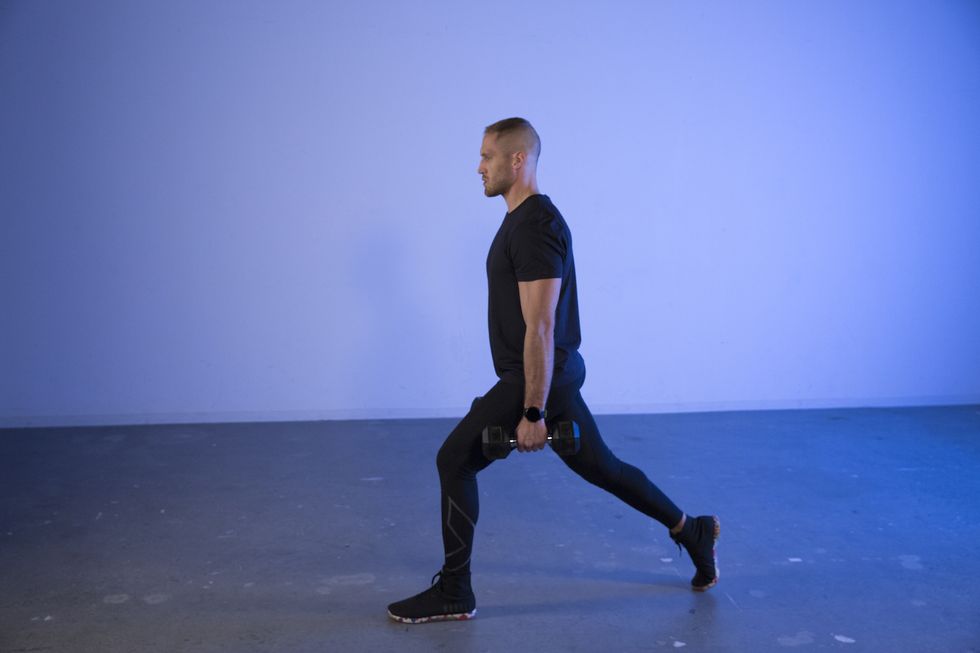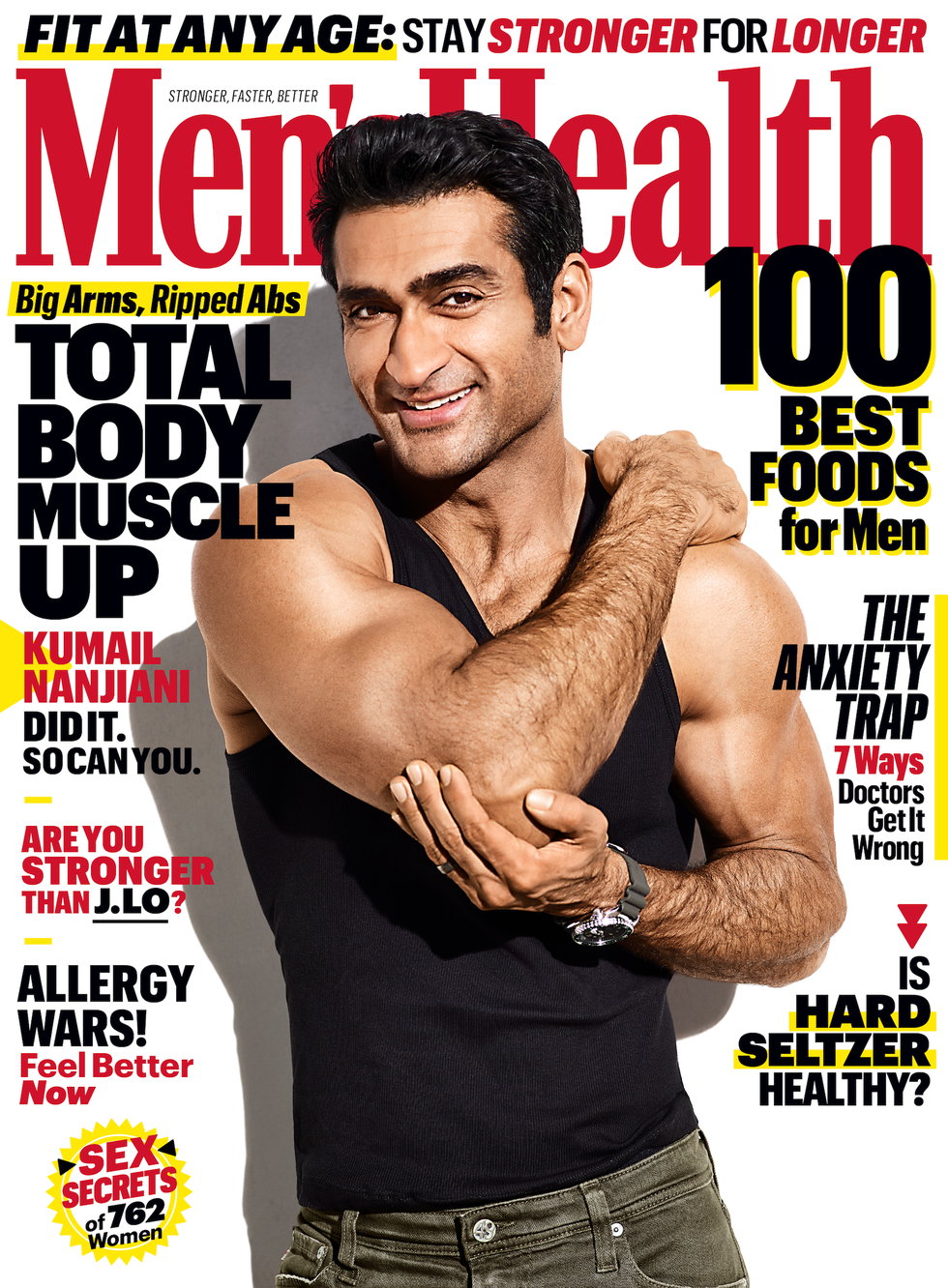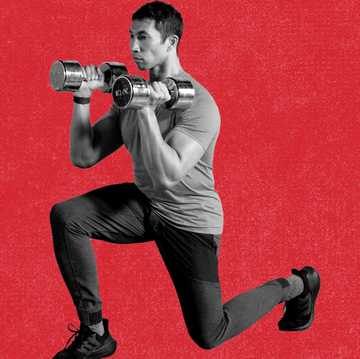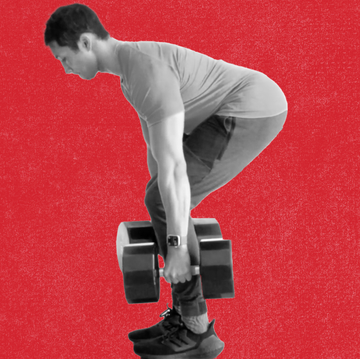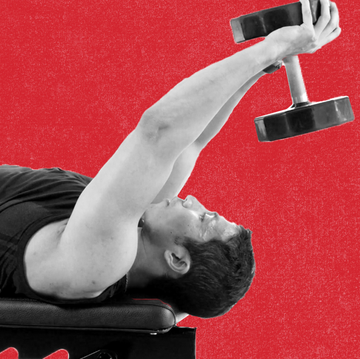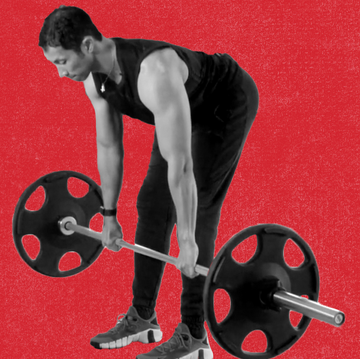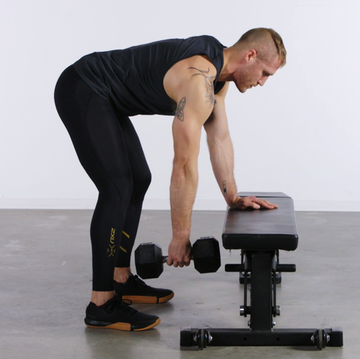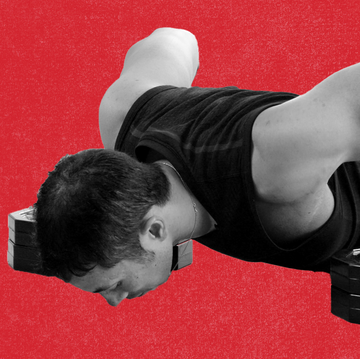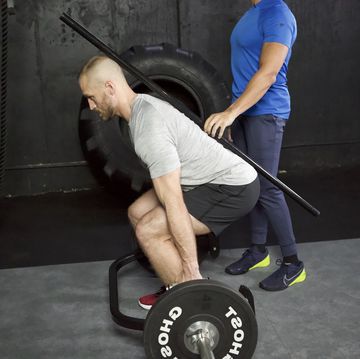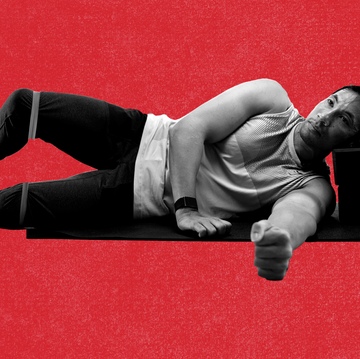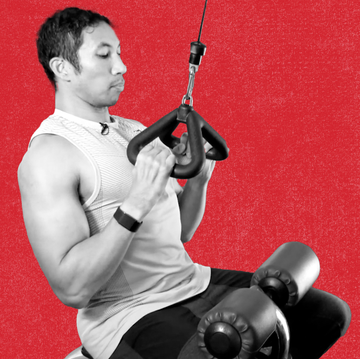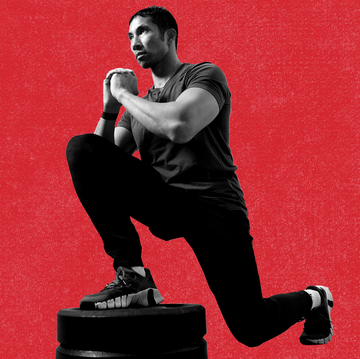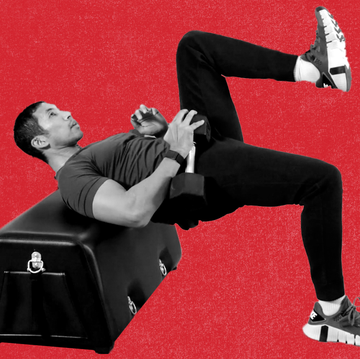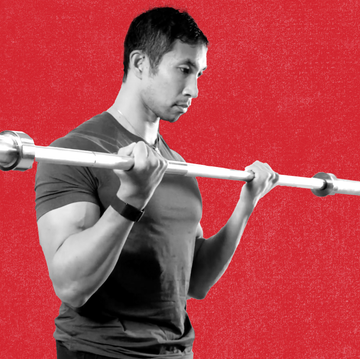The split squat can be an essential addition to your training routine to help build a strong, balanced lower body, but are you sure you're even doing the exercise correctly?
For this movement, you shouldn't settle for anything other than perfect form—especially because it's such a killer exercise. Let Men's Health fitness director Ebenezer Samuel, C.S.C.S. and associate fitness editor Brett Williams guide you through the move's subtleties, saving you from the bad habits that are keeping you from unlocking your fitness potential.
Before you grab your weights, step forward, and start jamming your knee into the floor, take note that it's extremely important to pay attention the movement here. Using the proper form is essential to make sure you're getting the most out of the exercise—particularly because of how important the split squat can be as a base for other unilateral movements like lunges, Bulgarian split squats, or single-leg deadlifts. Let's break down everything you need to know.
Set Up
Eb says: The biggest problem people have with split squats—and this goes for all of them, including Bulgarians, not just this starter kit move—is that they underestimate the setup. They think they can just set their feet apart and drop into the movement without any intention and without any focus, and then they drop down and press up awkwardly.
Start the split squat by letting your body understand where it has to end: Set up in that bottom position, making sure your front knee and back knee both have ninety-degree angles. Rise up from this position, squeezing your glutes, quads, and hamstrings to do so. Understand that your legs won't be perfectly straight at the top but that's OK; there's more constant tension in the top of a split squat than people realize.
Glutes Tight
Eb says: Squeeze your glutes both at the bottom of a split squat and as you rise up. Much like a traditional squat, you want the knee to track outwards (and not towards the center of your body) throughout the motion, protecting your ligaments and soft tissue, and that requires a dominant, focused glute squeeze throughout the split squat.
Load It Up
Eb says: Your tendency will be to view the split squat as a regression for unilateral leg training moves, and to assume that lunges and Bulgarian split squats offer more overall body benefit. That's not true. Once you master the split squat, this can be a powerful strength move in your arsenal, one that you can use to build overall strength, athleticism, and power.
After you've gotten a feel for the balance, don't be afraid to do it with a heavy barbell, hold kettlebells in a front rack for it, or hold heavy dumbbells at your sides. It has benefit as a power move, even if you're only doing 3 sets of 4 to 6 reps.
Want to master even more moves? Check out our entire Form Check series.
Brett Williams, a fitness editor at Men's Health, is a NASM-CPT certified trainer and former pro football player and tech reporter who splits his workout time between strength and conditioning training, martial arts, and running. You can find his work elsewhere at Mashable, Thrillist, and other outlets.

